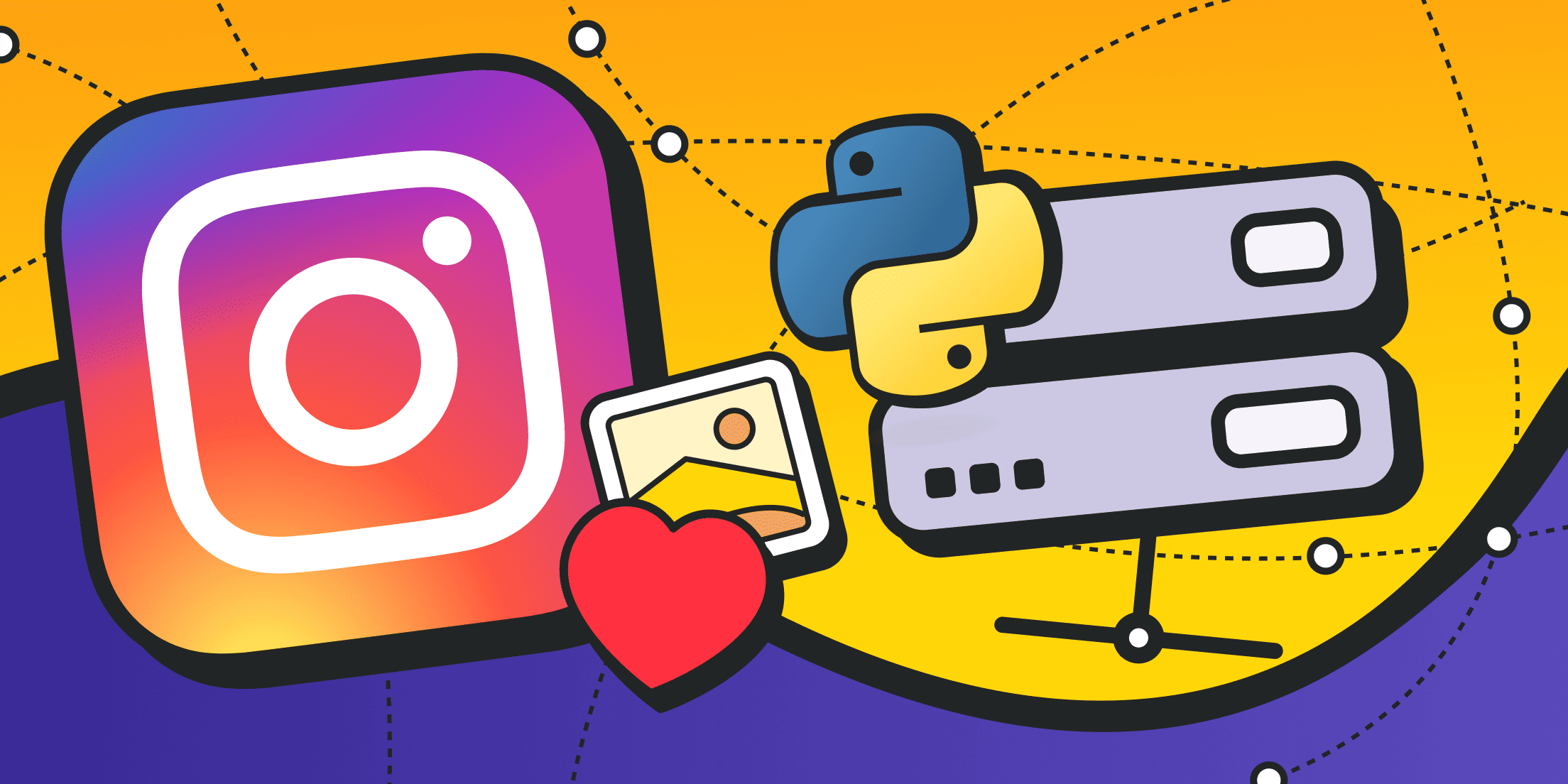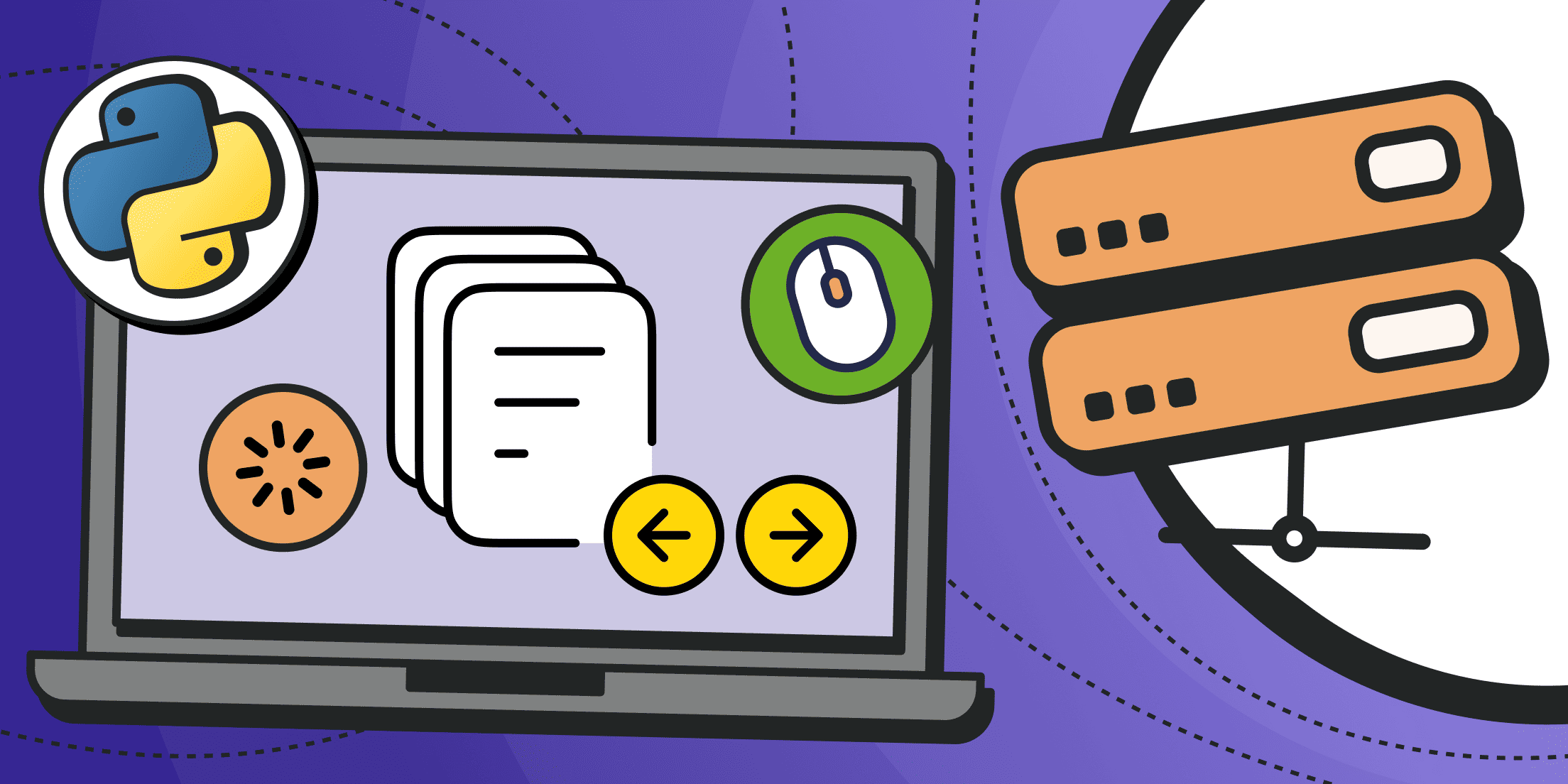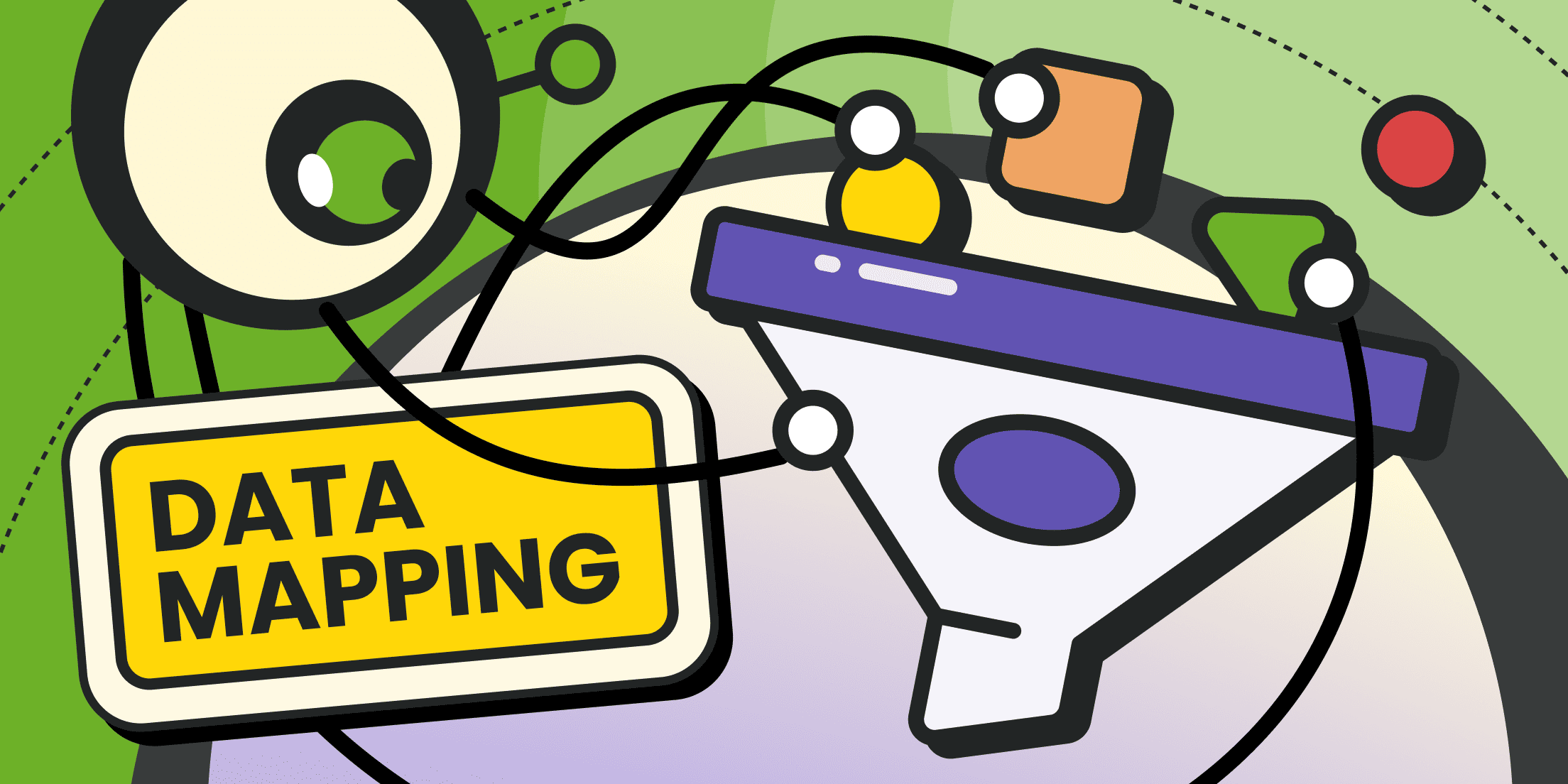Public data on Instagram attracts interest from businesses, researchers, and others who seek fresh insights. Many rely on scraping Instagram methods to gather visible information from profiles, posts, captions, comments, and hashtags. Using Instagram scraping techniques can help you spot patterns in how your audience behaves, how visible your brand is, and how engaged your audience is with your content.
Some try to scrape data from Instagram using automated steps that extract likes, follower counts, or captions. Others take an Instagram web scraping approach, parsing page structures or using APIs.
When done thoughtfully, collected information guides marketing efforts, supports product decisions, and improves understanding of user interests.
Types of Data You Can Scrape from Instagram

Those practicing scraping Instagram often collect multiple data points, then combine them to produce meaningful insights. Captions show the context, hashtags highlight trends, and comments reveal what the audience thinks. The number of followers shows how many people you're reaching, while likes and views indicate how engaged people are with your content. Putting these things together helps us see the connections that affect how much influence someone has on social media.
Possible data types include:
- Usernames, bios, profile images.
- Captions outlining themes or campaigns.
- Hashtags identifying popular topics.
- Comments conveying opinions or reactions.
- Like counts and views showing audience response.
- Geotags suggesting locations tied to posts.
- Follower and following lists mapping community size.
By using Instagram scraping, analysts build structured datasets. Some focus on hashtags to see what sparks discussions, and others use an Instagram followers scraper to measure audience growth. Those who scrape Instagram followers understand how communities evolve. Others turn to an Instagram comment scraper to analyze feedback at scale. When they learn how to scrape Instagram data, many begin with small tasks. Later, they advance to exploring large sets of posts, or try how to scrape Instagram explore page results to spot emerging topics. An Instagram web scraper or an Instagram web crawler can automate these steps. Over time, these efforts reveal patterns that guide effective strategies.
Mobile Proxies
Premium mobile IPs for ultimate flexibility and seamless connectivity.
What Instagram Data Can Be Used For
Data collected through scraping Instagram serves various goals:
- Tracking changes in competitor engagement patterns.
- Identifying influencers by examining follower size and interaction rates.
- Analyzing comments to gauge user sentiment toward products or services.
- Observing whether certain image styles or captions lead to higher engagement.
- Studying hashtag performance to guide content planning.
When teams scrape data from Instagram, they discover what resonates most with their audience. For example, a clothing brand noticing that posts with specific tags gain more likes might adjust its strategy. By using Instagram web scraping, it is possible to connect findings to broader marketing plans. A travel company might interpret geotag data, linking popular destinations to seasonal interest. Over time, patterns emerging from Instagram scraping help shape content choices, campaign timing, and influencer partnerships. Connected insights guide steady improvements in how brands and researchers understand the platform’s dynamics.
Methods for Scraping Instagram Data

Different approaches work for different needs. Some start small, gathering a handful of posts manually. Others write scripts that automate page requests and data extraction. More advanced methods rely on APIs providing structured data. Bots and crawlers handle repetitive actions, saving time. Throughout these steps, it helps to combine tools in ways that yield stable results and reliable information.
When making frequent requests, blocks or rate limits may appear. Proxies help maintain steady access by distributing requests. Those interested can refer to a guide on proxies for Instagram. With proxies, large-scale scraping Instagram projects become feasible. A balanced approach might begin with simple scripts that scrape Instagram data for one profile. Later, the process can expand to an Instagram web scraper that covers multiple accounts. Integrating headless browsers simulates user actions, which helps overcome obstacles like infinite scrolling or load-more buttons.
As teams refine their methods of scraping Instagram, workflows become smoother. Identifying needed data fields from the start clarifies tool selection. A stable pipeline involves setting clear goals, running test extractions, and adjusting code as platform structures shift. Over time, these refinements create a robust routine that supplies consistent data. Connecting each step logically—from reading a profile’s HTML to analyzing structured datasets—ensures the entire process feels cohesive.
In some cases, developers combine several techniques. For instance, they might run a daily script to scrape Instagram followers, then weekly bots to collect comments, and monthly APIs to check trending hashtags. By layering these methods, they construct a comprehensive view of content performance. This blended approach captures evolving patterns that static snapshots miss. As a result, decision-makers gain timely insights, responding more effectively to audience needs.
Tools and Libraries to Scrape Data from Instagram

There are lots of open-source libraries, custom scripts, and browser-based tools that can help you with Instagram scraping. Developers may rely on Python tools to parse HTML or JSON responses, while headless browsers load dynamic content. APIs skip some parsing steps. Each choice depends on skill level, resource availability, and project complexity.
When you're dealing with complex tasks, helpful features might include:
- Logic for pagination to access older posts.
- Rate limiting to reduce blocking risks.
- Proxy integration to keep requests steady.
- Logging progress for troubleshooting and error detection.
- Scheduling scripts to run periodically.
For instance, an Instagram web scraper might run nightly, collecting new posts. An Instagram followers scraper could record audience changes weekly. An Instagram comment scraper might focus on gathering user feedback. Developers asking how to scrape Instagram data often begin with a basic library, then add complexity step by step. Some learn how to scrape Instagram explore page results to track emerging topics or styles. Each tool fits into a system that transforms raw data into actionable knowledge.
APIs for Scraping Instagram
APIs return structured responses, often in JSON. By calling an endpoint for a specific user or hashtag, a script obtains captions, likes, and comments without manual parsing. APIs can be unofficial and subject to platform changes, yet they simplify data collection. This makes it easier to scrape data from Instagram at scale. Responses can be stored, transformed, and combined with other datasets. With fewer parsing hurdles, teams spend more time analyzing and less time fixing code.
When stable APIs are in place, large datasets form quickly. A marketing team might call an API to gather hashtag-related posts, then run sentiment analysis on captions. Another group could integrate API results with sales data, linking engagement peaks to product launches. This cross-referencing adds dimension and context to raw metrics, so researchers can see connections that remain hidden otherwise.
Manual Data Collection
Manual steps involve browsing a profile, reading captions, and copying results into spreadsheets. It's almost impossible to scale it for bigger purposes, but works fine for small tasks and initial exploration. It could also help beginners understand which fields are most significant. Teams also can validate the correctness of automated outputs by comparing them with manual samples. Once they trust their methods, they move on to more advanced techniques of scraping Instagram, leaving manual work as a verification step.
Bots and Scripts
Automated scripts or bots perform repetitive actions. A script might request several URLs, extract captions, and save them. Another simulates scrolling to reveal hidden comments then captures them. Combined with proxies, these bots handle large volumes over extended periods. Over weeks, they gather datasets that reveal seasonal trends or shifting preferences. An Instagram web crawler can move through interconnected pages, discovering related hashtags or exploring follower networks. As bots adapt to site changes, they maintain a steady flow of up-to-date data.
Data Management when Scraping Instagram
When you have data, the next step is data management.
Organizing the information into structured formats having specific field names, using the same encoding across all documents, as well as stable indexing would facilitate its understanding and improve navigation. Cleaning up the data set after scraping Instagram is just as important. This means getting rid of duplicates, fixing errors, and standardizing date formats. Once you've managed it all properly, the data is ready for analysis.
Here's a workflow example:
- Store raw data in JSON for easy parsing.
- Convert data into CSV for quick spreadsheet reviews.
- Load results into a database for advanced queries.
- Connect the database to visualization or machine learning tools.
Tidy data leads to faster insights. Mixing in data from places like Instagram with other sources—like sales figures or demographic statistics—gives you a richer, more detailed picture. With all this extra information, you can make better predictions and create more effective campaigns.
Residential Proxies
Perfect proxies for accessing valuable data from around the world.
Practical Example of Scraping Instagram
Imagine a marketing team studying a competitor. The team runs a script to scrape data from Instagram, capturing recent posts, captions, hashtags, and like counts. After several weeks, they check which hashtags often appear before engagement spikes. Spotting a pattern, they incorporate these tags into their own campaigns, expecting to attract more attention.
Next, they use an Instagram followers scraper to track audience changes. They observe that follower gains align with certain promotional events. Seeing this, they adjust campaign timing to match the moments that previously sparked growth. Later, they apply an Instagram comment scraper to understand what users mention frequently. By reading comments at scale, the team identifies recurring compliments or complaints and then refines its product line accordingly. Over months, these adjustments form a cycle of continuous improvement driven by accurate, timely data.
Another example could be a research team looking into how people travel. They use an Instagram web scraper to collect geotagged posts from different regions. They also find out which months are the most popular with tourists for each area, using the geotags to identify seasonal patterns. Combining this data with transportation schedules or hotel occupancy rates uncovers patterns that inform planning. The result is a smarter approach to resource allocation, marketing campaigns, and destination branding.
If a creative agency wants to understand popular visual styles, it might record image features and captions from high-engagement posts. The agency detects which aesthetic choices attract attention by correlating these features with likes and shares. Over time, that information is used to develop the agency's content recommendations for its clients so that they can be better matched with audience tastes.
The Legal and Ethical Concerns of Scraping Instagram
While public data on Instagram might seem freely available, the platform has strict rules governing its use. For instance, many wonder, Does Instagram allow scraping? The current terms of service restrict large-scale automated data collection to protect user rights and platform integrity. Ethical concerns also come into play, especially when dealing with user comments or personal details.
To stay compliant when scraping Instagram, just focus on public profiles and visible content. Try to steer clear of private areas or methods that could potentially disrupt the user experience. It's also a good idea to look into the data privacy laws in the region before you start scraping anything. Acting responsibly not only ensures compliance with platform rules but also helps maintain user trust and avoids potential legal challenges.
Conclusion

Scraping Instagram data is a great way to collect public information for a variety of purposes. Applying Instagram scraping helps transform follower counts, captions, hashtags, and comments into strategic insights. Those who scrape data from Instagram learn what resonates with audiences, spotting patterns hidden in plain sight.
With Instagram web scraping, researchers and marketers track changes, find out which hashtags are really influential, and see what their competitors are up to. Over time, consistent data collection, stable scripts, proxies, and good storage practices build reliable pipelines for analysis.
Steady effort in scraping Instagram leads to deeper understanding, guiding decisions that reflect real user interests. The result is a process linking raw platform data to meaningful outcomes, helping brands, researchers, and planners improve their approaches. This cycle of insight, adaptation, and refinement is still one of the best ways to get the most out of Instagram's public data.




